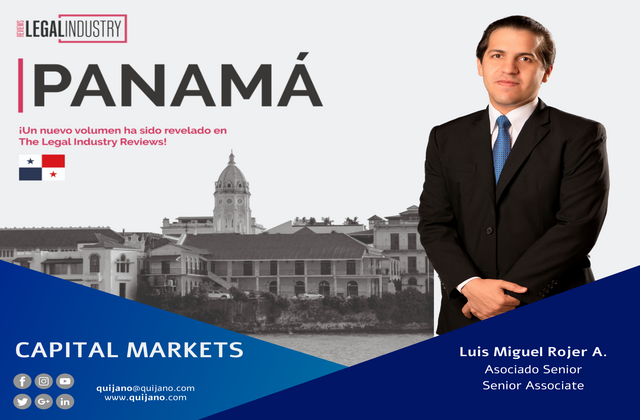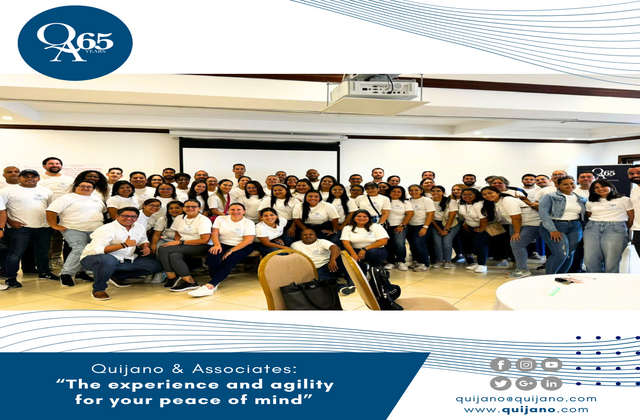Public – Private Associations in Panama

In recent years, public-private associations have become a very important option for guaranteeing investments in government infrastructures, thus becoming a tool for promoting the continuance of the country’s development.
- What can be defined as Public-Private Associations (APP)?
In a broad concept, they are contracts entered between public administration and private enterprise, where it can be observed that a privately financed company, builds and manages any aspect of a public service and collects for it over a period of several years, from the final user, as it is established in the concessions or through government payments or a combination of both.
The APP concept was not used before 1990, favoring Brazil and Mexico and in a smaller measure, countries like Argentina, Chile, Colombia and Peru, being the first countries to practice this investment scheme. However, what is now known as concessions, in which the private company has participation, has existed for many centuries in the countries of the Americas.
As it has been evidenced, private investment has played an important role in financing different public works during the last decades. Several Latin American countries saw the need to open to private investments and evidence that the public sector confronted difficulties for covering the region’s needs. To resolve these issues, it required to establish a series of structural and regulatory reforms in order to promote the implementation of new models of collaboration between both sectors.
The objective pursued is to properly combine both financing sources (public and private). In this item the Public-Private Association model (APP) has been considered by many countries as an opportunity to continue promoting the development of the region’s infrastructure in a more efficient and less risky manner.
Considering that the APPs are based on the principle that the private sector contributes a greater managerial capacity and technological innovation, which results in a greater efficiency that produces better quality of the service and at a lesser costs, which is one of the main objectives that any country seeks.
2. Public – Private Associations in Panama
In seeking that the private sector be involved and have an interest in the development of the infrastructure and services rendered by the State, there was an initiative with a bill issued by the Ministry of Economy and Finance (MEF) in April 2011, during the presidency of Ricardo Martinelli.
The bill’s concept presented the APPs as contracts between the public and private sectors which involved the private sector in providing the infrastructure and services traditionally provided by the State.
The concept of the Project is that the private Company is awarded the contract and it finances, builds, operates and maintains the infrastructure or renders the public service in exchange for receiving payment that may come from the final users, from the government or a combination of both.
The initiative remained in the files of the National Assembly under Bill 349, after a medical strike that arose at that time and the resignation of the former Minister of the Ministry of Economy and Finance, unfortunately due to which the initiative never went forward.
At present, the subject is again under consideration, seeking a strategy to reactivate the activities of the different economic sectors of the country.
Several entrepreneur sectors of the country consider that APPs are contracts that, if properly implemented, may promote the dynamics of the economy and at the same time reduce the fiscal and economic burden on the State.
3. Success of the Public – Private Associations in Panama
Models that sympathize with the definition of APP as they maintain investments in both sectors, have been applied in several sectors of construction and infrastructure development, in the transportation, energy, telecommunications, sanitation, and health sectors and many others. Of course there are successful experiences and others not so much, and as yet to be installed a qualified regulatory body that allows for customary and representative presence.
At present, Panama has awarded a total of 36 infrastructure projects using models similar to the APPs for a value of approximately US$10.100 million between 1990 and 2016. Pursuant to the Data Base PPI of the World Bank, the projects having a financial closure by sector include: 18 energy projects representing an investment of US$3.200 million; 4 information and communication technologies for a value of US$3.800 million; 4 projects for ports for a total of US$974 million, 1 for railroad for an approximate cost of US$75 million; 2 highways for a value of US$507 million; and 3 for water and sanitation for a total of US$25 million. There exists a low level of concentration in the industry. In fact, several companies of different countries share APP contracts in Panama, including AES Corporation (USA), Cable and Wireless (UK), Grupo Argos (Colombia), PSA Corp (Singapore), América Móvil (Mexico), Digicel (Bermuda) and Telefónica S.A. (Spain), amongst others. In 2013, Panama invested US$3.100 million (6,9% of the GDP) in infrastructure, mainly in transportation, representing a private investment of twenty-four percent (24%) of the total.
Due to the foregoing, we can guarantee that Panama has achieved important experience in this area.
Also, the World Bank registers 88 Type APP contracts with an investment of over 9 billion dollars from 1994. The Ministry of Economy and Finance calculates investments of over 14 billion dollars for the 2017-2021 period. This is a good option to continue increasing the extraordinary economic growth the Panamanians are achieving. Learning from global experiences and comparing investigations, will surely contribute to this purpose.
4. Public – Private Associations in Panama pursuant to the new Bill
In Panama, at present there is a new Bill that creates the Public-Private Association Regime and intends for its full regulation.
In the beginning, this important project conceives APPs as private participation modalities which incorporate experiences, knowledge, equipment, technology and distributes the risks and resources with the objective to create, develop, improve, operate and manage public infrastructure for providing public services.
Pursuant to the first draft of this Bill to which we have access, the APPs will be subscribed through a long term contractual relationship between one or more None Financial Public Sector Entities and one or more Private Sector Investors for the design, construction, repair, expansion, financing, exploitation, maintenance, administration and/or supplying of a merchandise or service to the Public Sector or to the final users of a public service, and also includes as to the financing that the private investor will be totally or partially in charge of the financing of the construction, exploitation and management of the public asset and partially in charge of the risks of the project. Likewise, also includes the payments for the investment made, and the operation and maintenance expenses, may be totally or partially at the charge of the Granting Public Entity and/or the final user of the service, and will be determined pursuant to the compliance of the Levels of Service contemplated in the APP Contract subscribed amongst the parties.
As mentioned, the Bill has not been formally approved and there is a long road ahead in the discussions to be made at the National Assembly of Lawmakers.
5. Challenges for Public – Private Associations in Panama
The APPs are not free from its own and inherent construction risks, although it has been accepted that they are a useful tool for supplying infrastructure, however, infrastructure projects that in general are of a large scale and a long term, presents a series of technical, construction, operative, financial, forza majeure risks of normative/political, non-compliance, environmental and social nature.
To minimalize said negative effect, it requires in all cases a strong judicial-analytical framework that allows avoiding the so called overheads and increases to the maximum the value of all of the parties, in relation to quality and capability with the long term objective to supply an infrastructure that fulfils the objectives and standards for which it was created.
One of the challenges presented by public – private associations, is that they are not easy solutions for governments that seek to increase the scale of its investments in infrastructure, as they require a full institutional evolution, and for such requires the following:
1. To establish a regulatory framework for this initiative in an efficient manner and to clearly establish the general limits and responsibilities for both parties;
2. To increase the resourcefulness of the public administration for the processes to be carried out;
3. To determine the initiative at the government level jointly with private companies in order to determine the priority with the convening of the processes, approvals and the disclosure necessary for the start-up.
4. To include the private company in the discussion and in making decisions pertaining to de drafting of the regulatory framework.
5. Training of officials on the aspects of the new regulations.
6. Sources of Information and Bibliography
World Bank, Data Base of Private Participation in Infrastructure, “Country Snapshots: Panama”, 2017 [https:/ / ppi.worldbank.org/ snapshots/ country / panama] Checked on January 2017.
World Bank, Data Base of Private Participation in Infrastructure, “Top Sponsors”, 2017. [https: / / ppi.worldbank.org/ snapshots / country / panama] Checked on January 2017.
Evaluation of Public – Private Associations in Infrastructure – BID, Office of Evaluation and Supervision (OVE), March 2017.
The Economist Intelligence Unit, Infrascopio 2017, “Evaluación del entorno para las asociaciones público privadas en América Latina y el Caribe”.
La Estrella, “Capac aboga por proyecto de ley de asociaciones público-privadas”, noviembre 2016. [http:/ /laestrella.com.pa/ economia/ capac-aboga-proyecto-asociaciones¬publico-privadas/23972936] Checked on July 2019.
National Government, Law 34 – Published on June 5, 2008, “De Responsabilidad Social Fiscal”. [https:/ / www.gacetaoficial.gob.pa/ pdfTemp / 26056 / 11115. pdf] Checked on July 2018.
Public – Private Associations in Latin America. Learning from the Experience, José Manuel Vassallo Magro, Gatos Gemelos Comunicación Bogotá, Colombia – July 2015.




